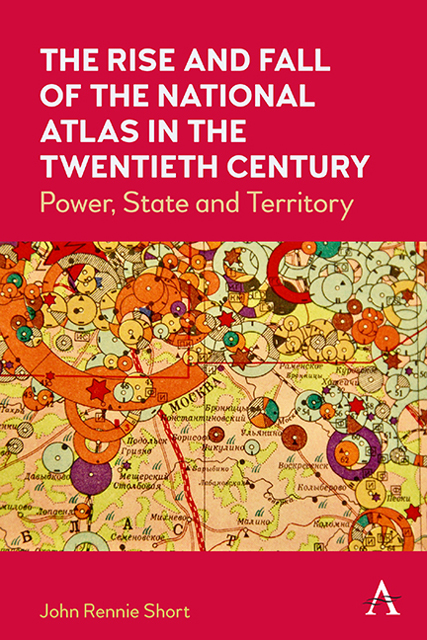Book contents
- Frontmatter
- Contents
- List of Figures
- List of Tables
- Acknowledgments
- 1 Introduction
- 2 The Early National Atlas
- 3 Cartographic Anxieties and the Emergence of the Modern National Atlas
- 4 Cartographic Ruptures and the National Atlas
- 5 National Atlas, Global Discourses
- 6 The Physical World of the National Atlas
- 7 The Social World of the National Atlas
- 8 The End of the National Atlas?
- Notes
- Appendix: National Atlas Bibliography
- Index
8 - The End of the National Atlas?
Published online by Cambridge University Press: 09 December 2022
- Frontmatter
- Contents
- List of Figures
- List of Tables
- Acknowledgments
- 1 Introduction
- 2 The Early National Atlas
- 3 Cartographic Anxieties and the Emergence of the Modern National Atlas
- 4 Cartographic Ruptures and the National Atlas
- 5 National Atlas, Global Discourses
- 6 The Physical World of the National Atlas
- 7 The Social World of the National Atlas
- 8 The End of the National Atlas?
- Notes
- Appendix: National Atlas Bibliography
- Index
Summary
While the title of this book implies the fall of the modern national atlas, this is not a certainty. This chapter's title is more appropriately in the form of a question rather than a definitive statement. It is appropriate then that we consider some of the factors that have almost killed the printed atlas, before looking at new and emerging sources of cartographic vitality. The basic argument of this chapter is that while the old-style national atlas may be dying, new forms may be emerging.
By the end of the short twentieth century, the printed version of the national atlas was collapsing under the weight of its ambition. The 1970 National Atlas of the United States—with its 765 maps—weighed in at around twelve pounds. This assemblage comprised prolific efforts of data collection, information assembly, statistical analysis and cartographic display. Eighty-four federal agencies led by the Department of the Interior organized this vast undertaking. Yet only 15,000 copies were printed and distributed, mainly to schools and colleges. The data was quickly outdated and rarely consulted, filling unread, weighty tomes gathering dust on library shelves. It was the last printed national atlas of the United States, soon becoming an historical artifact, reminding us of a different time.
The cosmographers’ dream of encompassing the world that lay at the heart of the national atlas was overwhelmed by the accelerating increase of information and data. Heroic attempts to encompass the vast and growing material of a nation included the National Atlas of India. The 1959 edition contained 37 maps in one volume. The 1979 edition grew to two volumes while the 1982 edition ballooned to eight. By the time of the 2003–9 printed edition, the national atlas comprised 10 volumes, each 30 cm by 45 cm (roughly 22 by 18 in.). It was more a coffee table than a coffee table book and, possibly, if all the tomes were stacked ingeniously together, a small, intimate coffee shop. The sheer length of the project meant that by the time the volumes were published, much of their data was out of date.
The printed national atlas probably reached its peak around 1960–80 fueled in part by international comparisons. As more nations produced an atlas, pressure grew on those yet to produce one.
- Type
- Chapter
- Information
- The Rise and Fall of the National Atlas in the Twentieth CenturyPower, State and Territory, pp. 143 - 152Publisher: Anthem PressPrint publication year: 2022

